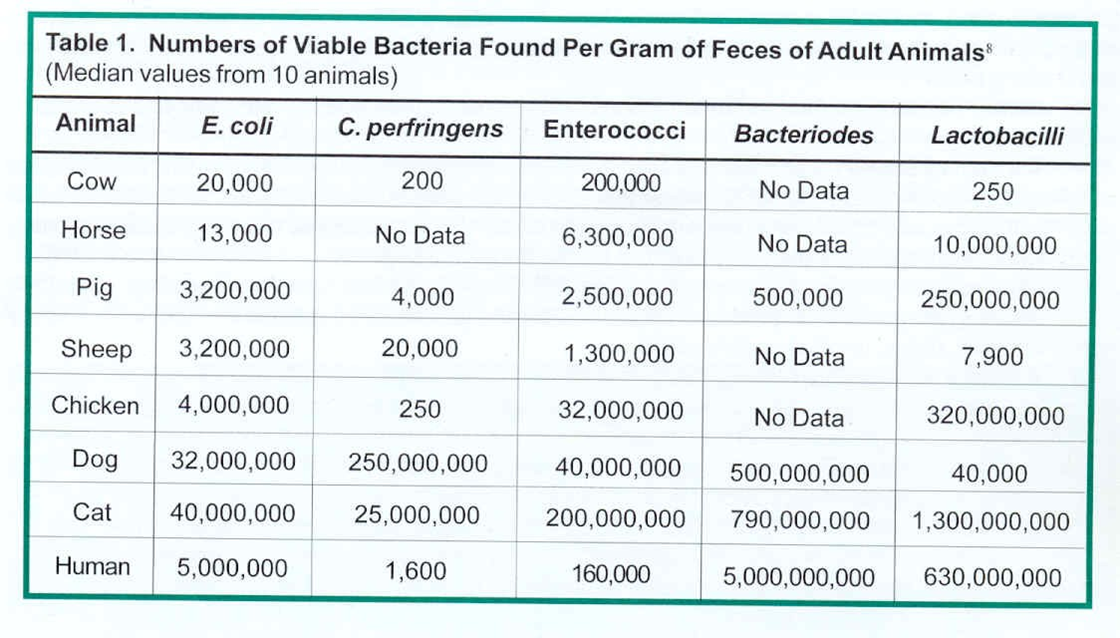
Objective: calculate the amount of enterococcus in the feces of one dog. Calculate the volume of water at a small beach. Determine whether one dog's feces significantly affects water quality.
First consider the concentrations of bacteria in the feces of different warm-blooded animals. The
concentration of Enterococcus bacteria in dog feces is 40,000,000 entero/gram. Cat feces is even worse,
and human feces is comparatively clean.

We know that a lot of dog feces can shut down a beach, but what about just one dog? This question occured to me one day at Asilomar Beach in California. I saw a lady covering her dog's feces with seaweed; she thought it would just wash into the ocean and not be a problem. Let's find out if she was right. Remember that the beach will shut down if enteroccous bacteria are found at a concentration of 104 enterococcus / 100 milli-liter sample, or about 1 entero/ml.
A small dog might poop about 100 grams. The number of enterococcus in its feces is thus
Enterococcus: E = 40,000,000 entero/gram x 100 gram = 4,000,000,000 bacteria.
Asilomar's beautiful beach is in a small cove between two rocky headlands. I estimate that it is about 200 m long.
Figure that the bacteria in the feces will be mixed throughout the surf zone, which extends about 20m offshore, and
is about 2 m deep at the seaward end. Calculate the volume of water at that beach, in cubic meters, then convert it to
milliliters.
Volume of a prism: V = 1/2 x 2m x 20m x 200m = 4,000 m3 water
Convert to milliliters: V = 400 m3 x (100 cm/m)3 = 4,000,000,000 ml water
and there you have it -- there are exactly as many enterococcus bacteria in the dog's feces as there are milliliters
of water in the beach. One dog can shut down the beach. Remember that.
| Back to Follow Up Studies | Huntington Beach | Cleanliness of your local beach |